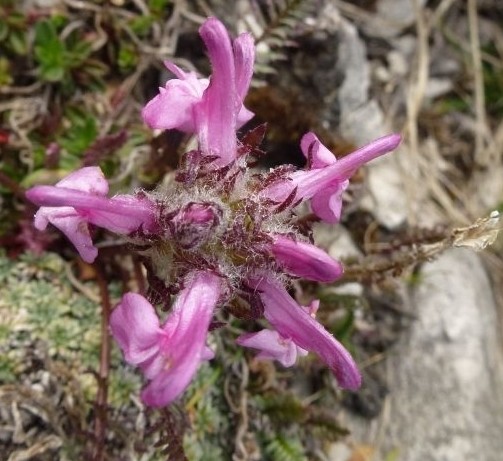Long-nosed lousewort
(Pedicularis rostratospicata)

Description
Pedicularis rostratocapitata is a species of flowering plant in the family Orobanchaceae commonly known as long-nosed lousewort. It is endemic to the Alps. These plants are 15 to 45cm tall. The biological form is scapose hemicryptophyte (H scap), i.e. in general they are herbaceous plants, with a perennial biological cycle, with wintering buds at ground level and protected by litter or snow and have an erect floral axis often devoid of leaves. They are also parasitic plants: the roots show specific organs to feed on the sap of other plants. The roots, often fusiform or fasciculate, large and fleshy, are distributed radially trying to reach the roots of other plants to suck their sap. The aerial part of the stem is ascending or erect; it is hairless at the base, while it is pubescent near the inflorescence. The leaves have a lanceolate outline and the shape is twice pinnatosette; the surface is hairless. The petioles are hairless. There are usually more than three cauline leaves. Size of the leaves: width 1-2 cm; length 4-8 cm. The inflorescences are formed by elongated spikes capitate with pedunculated or sub sessile and spaced flowers. The bracts of the inflorescence are similar to the cauline leaves but shorter and hairy. Peduncle length: 1-2 mm. The flowers are hermaphrodites, zygomorphs (of the bilabiate type), tetramers, that is, with four verticils (chalice - corolla - androecium - gynoecium) and pentamers (the corolla and the chalice have 5 parts). Flower length: 11-16 mm. The fruit is an ovoid-shaped bivalve loculicidal capsule (when ripe it is twice as long as the calyx). The seeds are few and angular in shape.
Taxonomic tree:







